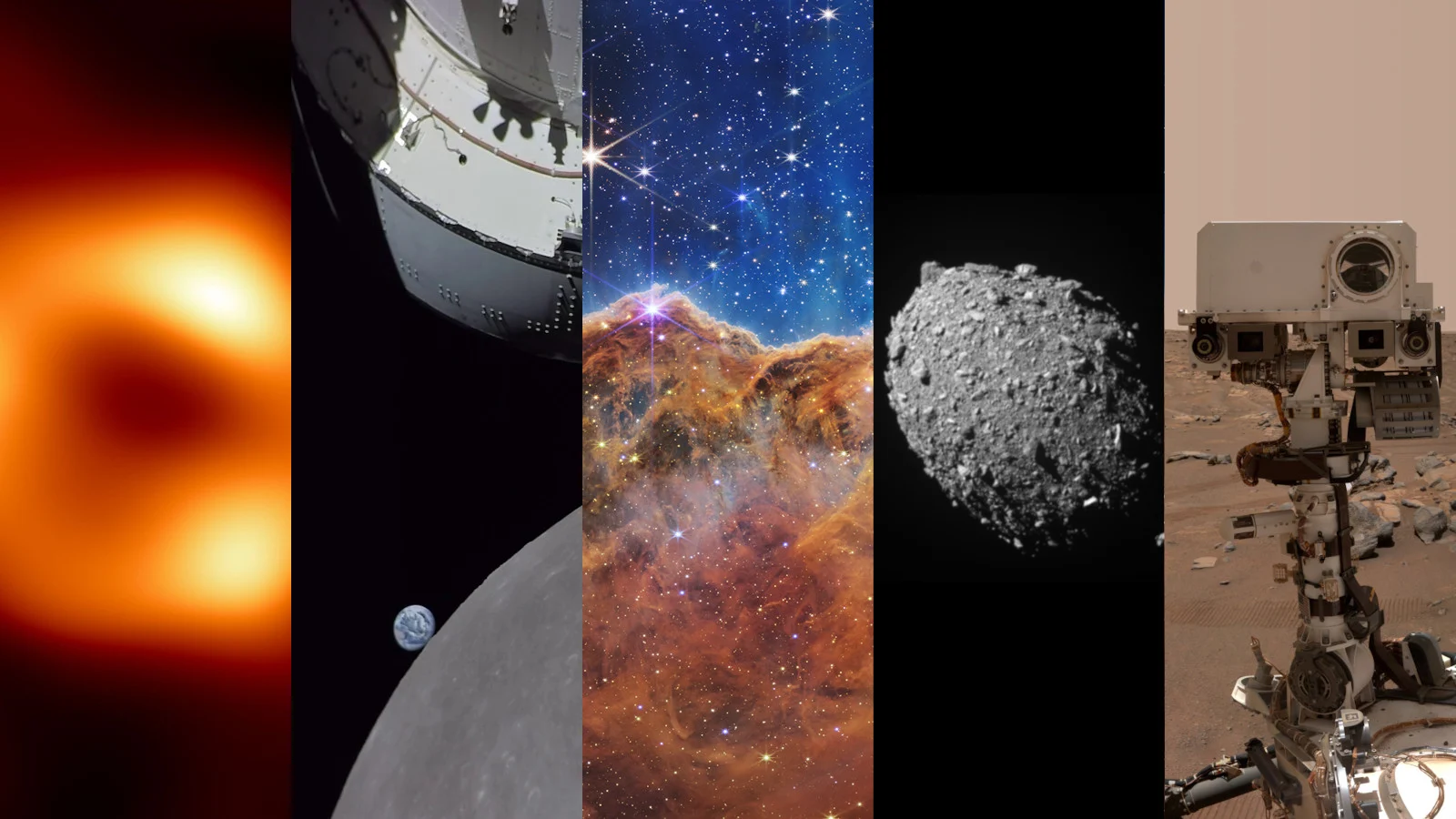
Astronomy and space exploration reached new heights in 2022
These five stories from the Moon, Mars and beyond stood out from the rest in 2022.
Throughout the year in 2022, there was a lot going on in space — around our own planet, on or around other planets in our solar system, and out in the grand universe beyond.
In no particular order, here are the top five events of the entire year.
JWST begins exploring the universe
On Christmas Day 2021, the most powerful space telescope ever built finally launched. However, we had a long wait to see its first images. It took the James Webb Space Telescope a month to arrive at its new home, at Lagrange Point 2, located 1.5 million kilometres from Earth. After that, we had a gruelling 6-month wait as it was aligned and calibrated before it showed us the universe as we had never seen it before.
After all of that time, the results were well worth the wait!

Using its sensitive infrared instruments, JWST imaged SMACS 0723 (top), a cluster of galaxies so massive they warp the space around them, which magnifies the distant galaxies in the background, the Carina Nebula (bottom left), and the Southern Ring Nebula (bottom right), for its initial image release. Credits: NASA, ESA, CSA, STScI
Since the first Wow images were released on July 12, there has been a steady stream of content from JWST. Just as promised, the telescope has delivered awe-inspiring looks at the cosmos — from planets in our own solar system to often-visited astronomical scenes to the farthest and oldest galaxies we've ever spotted.
The astounding thing is that what we've seen is only the beginning!
Astronomers are lined up to point this telescope at the most exciting and compelling targets in the known universe. The mission has the potential to reveal what the earliest stars and galaxies looked like, it may find evidence of life on distant exoplanets, and it will undoubtedly make discoveries of things that we didn't even know existed!
Read more:
The first image of the Milky Way's supermassive black hole
It wasn't the first supermassive black hole astronomers had ever imaged. That distinction belongs to the one that lies at the heart of galaxy M87.
However, the image of Sagittarius A*, the supermassive black hole at the core of our own Milky Way galaxy, was a monumental achievement by astronomers using the Event Horizon Telescope.

This long-exposure image of our galaxy's supermassive black hole was captured by the Event Horizon Telescope. Credit: EHT Collaboration
Now, we cannot directly see a black hole, not even one with the mass of 4 billion Suns. Its gravity is so strong that not even light can escape it. However, we can observe the ring of hot gases that circles around the black hole, known as the accretion disk. That is what the astronomers captured in the image above.
This image of Sagittarius A* (pronounced Sagittarius A-star) may be blurry, but there's a good reason.
During each observation of the black hole, EHT telescopes had to stare at Sagittarius A* for several hours, gathering all of the light they could over that time. That collected light was then put together to produce something we can see as an image. However, the dust and gas in the accretion disk take only minutes to swirl around the black hole's border.
So, it's like taking a long-exposure image of our night sky, which causes the pinpoints of starlight to stretch into long curving trails. Or even just taking a typical picture of a pet or a small child running around the yard. The movements of the target cause the fine details to be blurred together.
Achievements like this are significant because they push the boundaries of what we know about the universe and help us test our most vital theories about how the cosmos works. They can even lead to new discoveries and ways of observing and exploring space.
Read more: Here's our first real image of the Milky Way's supermassive black hole
The Artemis I mission to the Moon
NASA's return to the Moon has been one of the past decade's most highly anticipated human spaceflight missions. Unfortunately, with numerous delays and technical difficulties, it seemed as though the Artemis I mission would never get off the ground!
However, the day finally arrived on November 16. After enduring the onslaught of Hurricane Nicole less than a week before and the launch crew dealing with one last technical problem, the Orion spacecraft and Space Launch System finally blasted off from Kennedy Space Center!
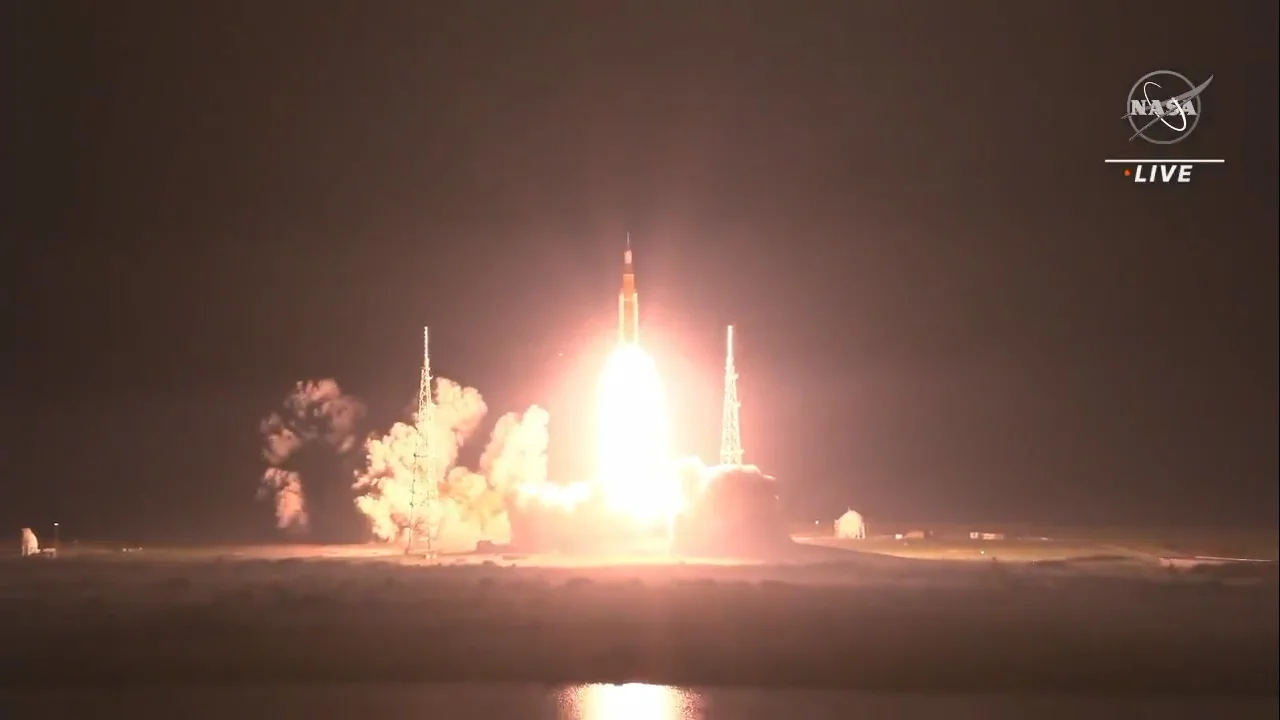
Artemis 1 blasts off from Launch Pad 39B, on Wed. Nov. 16, 2022. Credit: NASA
Once the rocket was flying, and the spacecraft was on its way to the Moon, the difficulties of getting to this point were largely forgotten.
Orion executed a perfect flyby of the Moon, putting it into a distant retrograde orbit. It then broke the record for the farthest distance from Earth for a human-rated spacecraft, set 52 years ago by Apollo 13. Finally, after one more close pass over the sunlit lunar terrain returned breathtaking views, Orion was splashing down off the coast of Baja California.
This is just the first Artemis mission. Artemis II is expected to launch within the next two years, following a similar route to Artemis I, but with 4 as-of-yet-unnamed astronauts on board Orion for the trip! This will be followed up by Artemis III in the years after, where two astronauts will actually touch down on the lunar surface to explore the Moon's south pole for the first time.
If all goes as planned, this will lead to the first permanent human presence in lunar orbit and on the Moon's surface, which will act as a stepping stone for us to explore deeper into the solar system.
Read more:
NASA to skip Orion 'like a rock' across the atmosphere before Sunday splashdown
NASA Orion splashes down after amazing trip to the Moon and back
DART slams into asteroid Dimorphos
It was like a scene out of a science fiction disaster movie. On the night of September 26, scientists and engineers gathered around monitors in a NASA control room, cheering as the spaceship they launched 10 months before successfully impacted with a near-Earth asteroid.
There was one crucial difference between this genuine scene and what we'd see in a movie. The team wasn't cheering because they had just saved Earth. The asteroid their spacecraft had hit, Dimorphos, posed no threat to Earth before the impact. Even now, after the impact, it continues on its safe trajectory through the solar system.
The excitement came from the fact that the spacecraft — the Double Asteroid Redirection Test or DART — had successfully flown millions of kilometres and then guided itself in, with no help from human controllers, to make a perfect impact with Dimorphos.
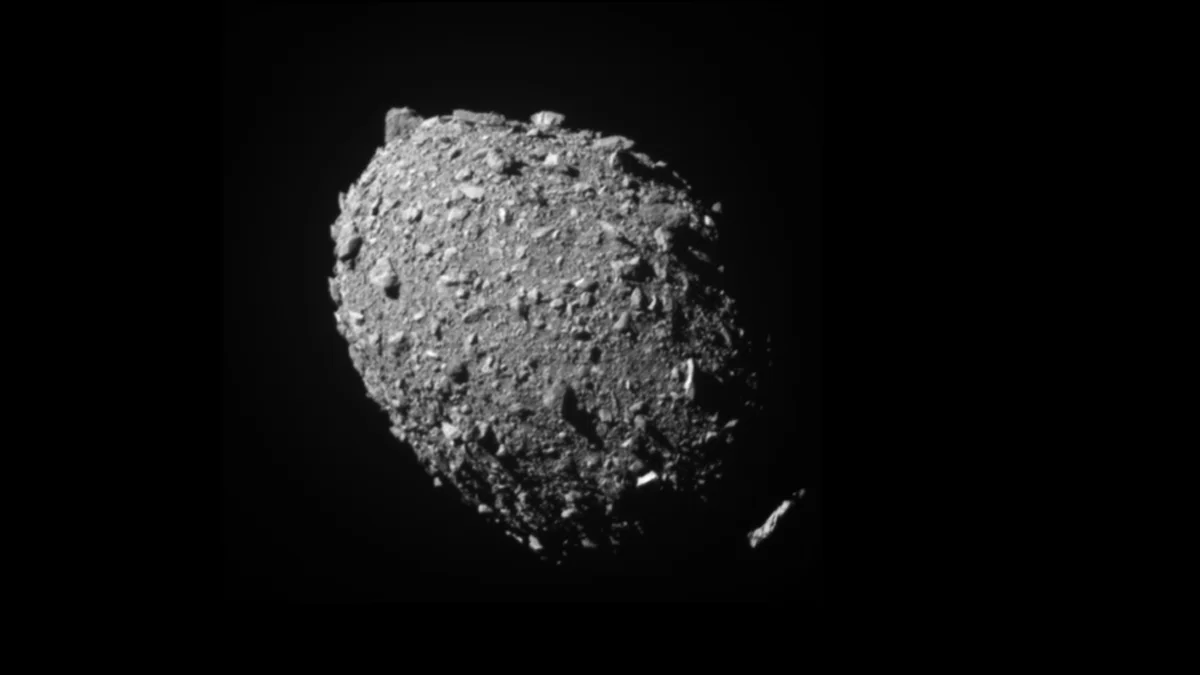
Asteroid moonlet Dimorphos as seen by the DART spacecraft's DRACO camera 11 seconds before impact (68 kilometres out). This image was the last to contain all of Dimorphos in the field of view. Credit: NASA/Johns Hopkins APL
The purpose of this was to conduct the first real planetary defence test to see if we could protect ourselves from an incoming asteroid.
Currently, no known asteroids pose a danger to us on Earth. However, we may find one in the future. If we spot one with enough time to respond, we could launch a spacecraft like DART to crash into it. The goal isn't to destroy the space rock. Instead, the force of the impact would be used to nudge the asteroid off its collision course with Earth and onto a much safer path.
Not only did DART perform its test perfectly, but it also had more of an effect on Dimorphos than anticipated.
The spacecraft was relatively small compared to its target. Still, the effect of DART's high-speed impact was greatly amplified by the 1,000 metric tons of debris blasted out into space as the spacecraft hit. In a process known as momentum transfer, the motion of each rock and dust particle flying away from the impact site added an extra bit of push on Dimorphos. It's this momentum transfer that NASA scientists say is most important for a small spacecraft to affect such a large object.
Don't worry, though. Sure, sci-fi loves to tell tales of missions like this going horribly wrong. However, DART only changed the length of time it takes Dimorphos to circle around its larger parent asteroid, Didymos.
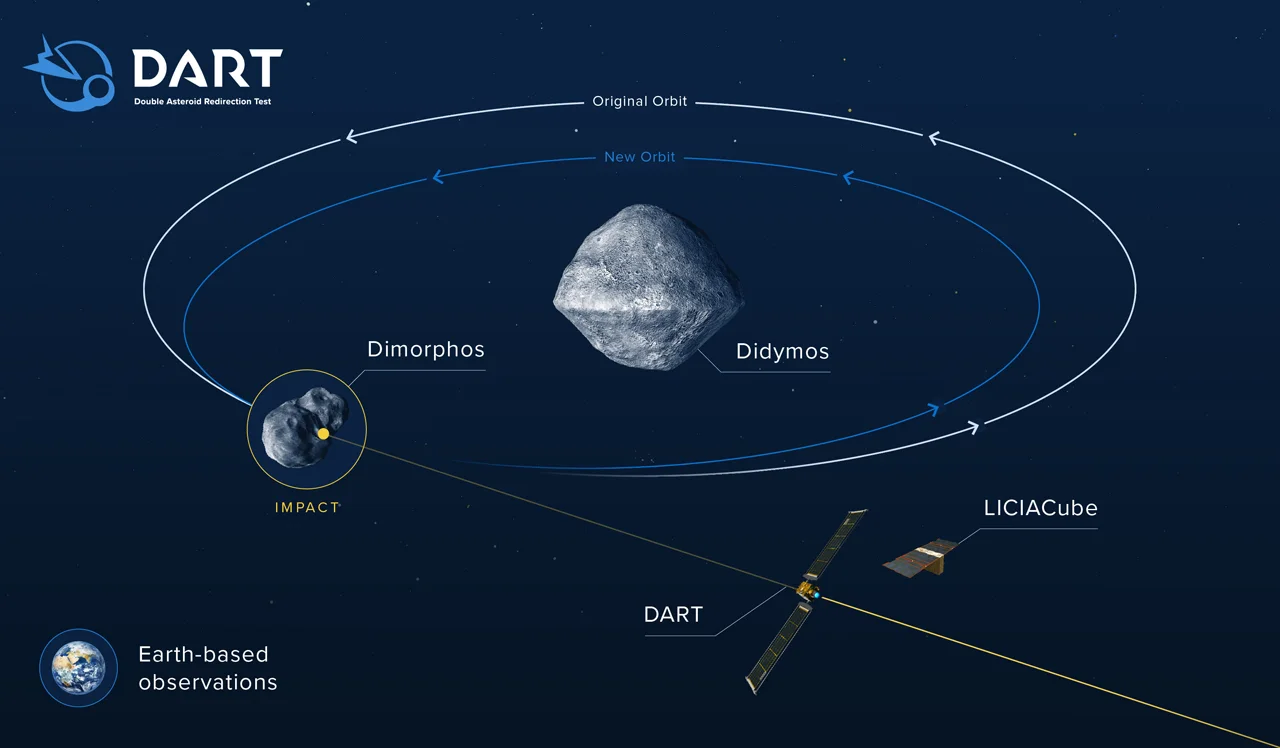
Credit: NASA/Johns Hopkins APL
So, even with this test going far better than expected, this asteroid pair still poses no threat to Earth.
Read more:
Perseverance reaches the Martian river delta
NASA's Perseverance rover landed in Jezero Crater on Mars in February 2021. It immediately proceeded to rove about, sending back images and data that challenged scientists' views of the history of that region of the planet.
Starting off 2022 by breaking records on its February 'landiversary', the rover's science mission kicked into high gear in April. That is when Perseverance arrived at its primary target — the layers and layers of sediment piled up on top of one another at the western end of the crater.
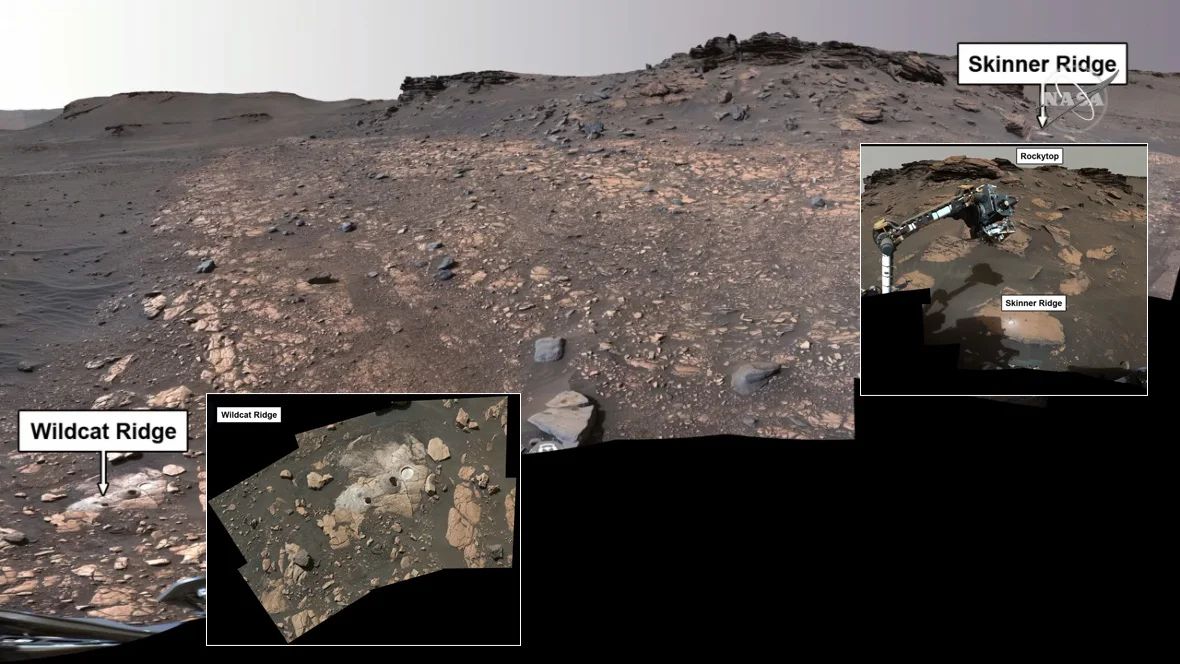
This composite image of the river delta front shows two locations where Perseverance has taken samples — Wildcat Ridge and Skinner Ridge. The inset views show mosaics from the rover of each site after a sample was drilled from the rock. Credit: NASA/Scott Sutherland
You see, based on studies of the Martian terrain viewed from orbit, scientists determined that millions of years ago (at least), a freshwater lake filled Jezero Crater. Also, it was evident from space imagery that the lake was fed by a river that flowed into the crater through an opening in the western crater wall. For thousands to millions of years, the flow of that river carried sand and silt particles, which were deposited into a river delta just beyond that cleft.
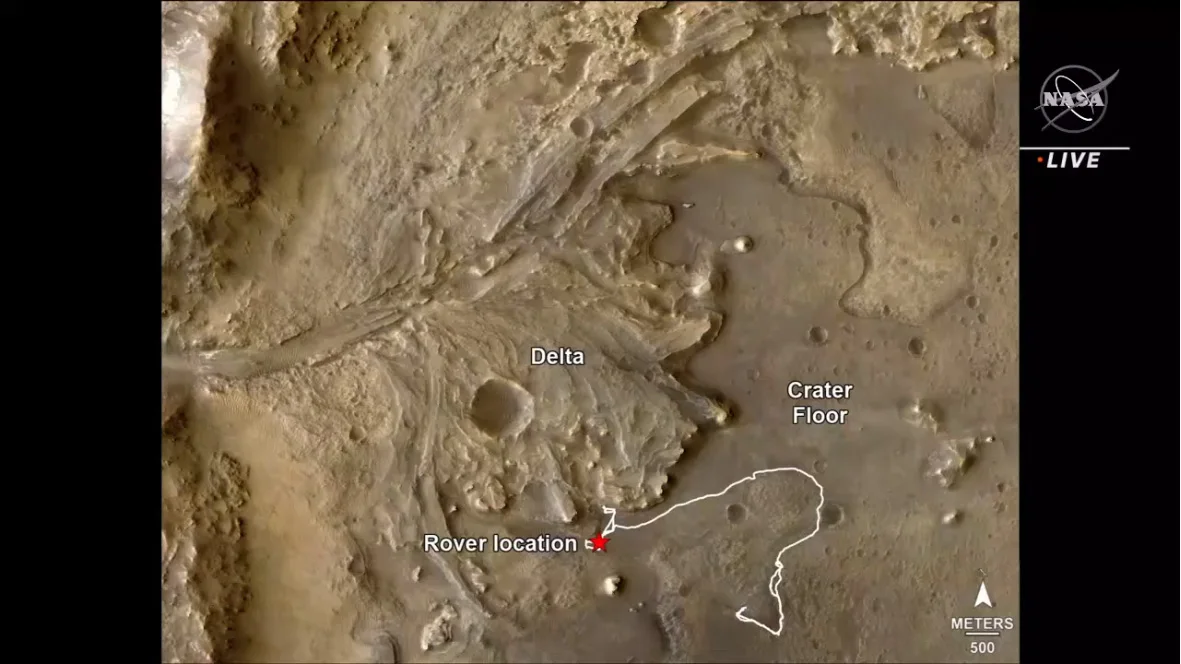
This map of the western edge of Jezero Crater shows the path of the Perseverance rover since its mission began in February 2021 (white line), and the rover's current location (red star). Credit: NASA
Evidence has been mounting that Mars once had a warmer, wetter environment, which would have been perfect for the development of life. It may have even been habitable before Earth! So, if life did develop there, even in microbial form, Perseverance could find evidence of it in the layered sediments of that river delta.
Read more:
Perseverance rover sets new driving record to celebrate 1st year on Mars
Perseverance rover picks up pet rock on its way to Martian delta
Perseverance finds strongest signs yet of ancient life on Mars
Bonus: Ingenuity keeps flying on Mars
When the Perseverance rover touched down on Mars, it wasn't alone. Tucked away in the rover's 'belly' was a tiny drone helicopter named Ingenuity.
Set down on the Martian surface on April 3, 2021, Ingenuity first survived the cold Mars night on its own. Then, it went on to wow us!
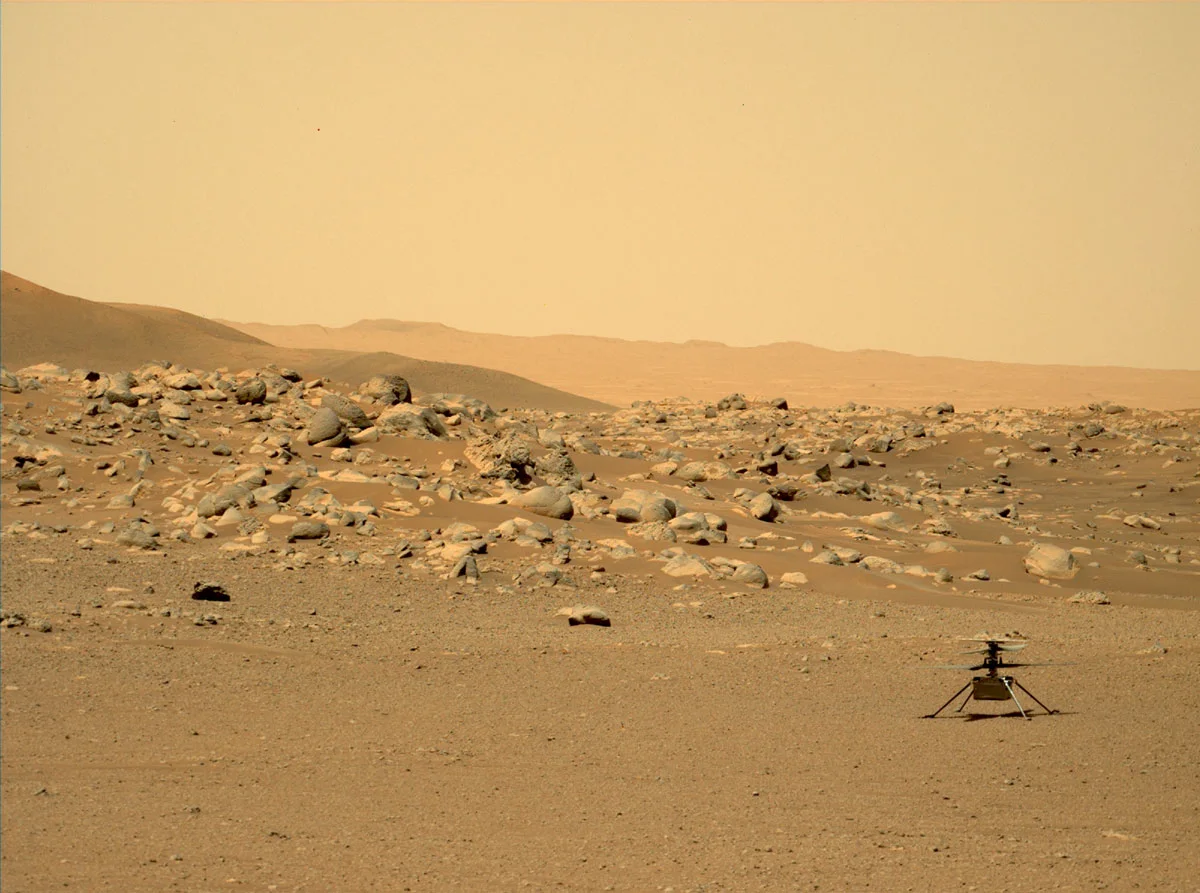
Ingenuity sits at 'Airfield D' on May 6, 2022. Credit: NASA/JPL-Caltech/ASU/MSSS
The team at NASA's Jet Propulsion Laboratory anticipated that the helicopter would survive a few weeks — just long enough to perform a handful of flights and prove that rotor flight was possible in Mars' extremely thin atmosphere.
By the end of 2021, Ingenuity had completed a total of 18 flights, pushing its achievements higher and farther! Throughout 2022, the Mars helicopter doubled that number while also beating its previous records for flight distance, altitude, and speed!
This remarkable little drone has done so well that including one in future missions to the Red Planet may become standard practice.
The concepts for the Mars Sample Retrieval Mission, which is expected to depart sometime in the next decade, once relied on a wheeled 'fetch rover' to retrieve the samples taken by Perseverance. Now, the team has switched to using two Ingenuity-like helicopters that will fly out from the lander to gather them up.
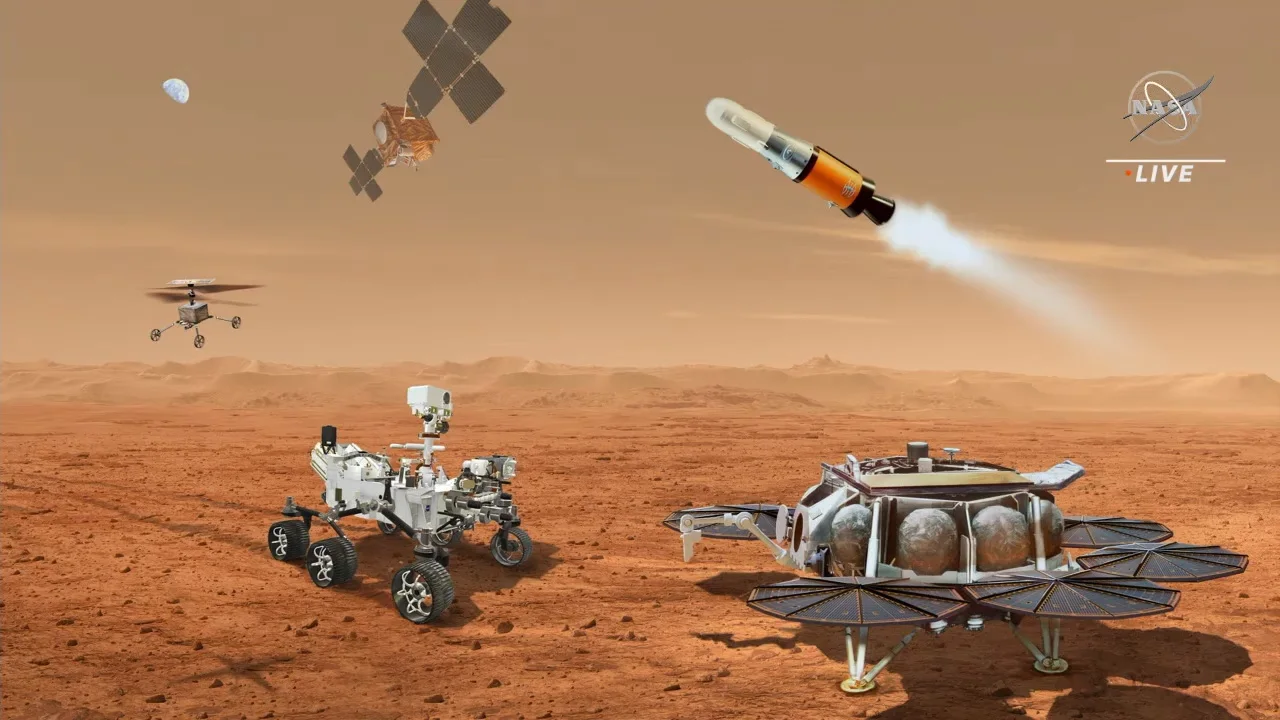
This artist's conception drawing shows the different elements of the Mars Sample Return campaign, with the lander (bottom right), sample retrieval drone (centre, left), Mars ascent vehicle (top right), and Earth Return Orbiter (top), all cooperating with Perseverance to complete the mission. Credit: NASA/JPL-Caltech
(The thumbnail image is courtesy of the EHT Collaboration, NASA, JWST (NASA, ESA, CSA, STScI), NASA/Johns Hopkins APL, and NASA/JPL-Caltech/MSSS)











